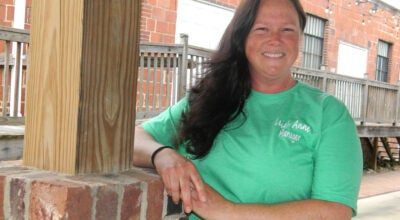NCRC: UNC researcher measuring impact of fatty acids on brain development
Published 12:00 am Wednesday, June 24, 2009
By Emily Ford
eford@salisburypost.com
Little Payton Zerkle didn’t know she was the subject of a scientific experiment at the N.C. Research Campus.
The curious 16-month-old with a blond topknot just thought she was playing with neat toys and making new friends.
“It was fun for her,” mother Robyn Warren said.
Scientists with the University of North Carolina’s Nutrition Research Institute in Kannapolis will follow Payton and other babies for four months to determine if adding omega-3 fatty acids from flaxseed oil to their diet will make them smarter.
It’s the first nutrition study at the Research Campus to recruit local participants.
“I wanted her to be a part of discovering things that we don’t know yet,” Warren said about her daughter.
Dr. Carol Cheatham, a child psychologist and neuroscientist at the Nutrition Research Institute, wants to know how a child’s diet affects cognition. In other words, whether certain foods help kids think.
“It’s exciting science,” Cheatham said. “Especially now that we are narrowing down which foods help a child’s memory.”
Previous research done by Cheatham, who joined the Nutrition Research Institute’s brain research team last year from the Kansas University Medical Center, suggests that omega-3 fatty acids speed up pathways in the brain.
In her current study, she’s testing whether adding flaxseed oil to children’s diets helps them think more clearly.
Young Payton is the sixth baby in the study. Cheatham needs 94 more 16-month-olds to complete her project.
But research on kids can be a tough sell.
“I’m afraid people imagine test tubes, chemistry labs and mad scientists,” Cheatham said.
Although children do have to give a drop of blood during their first and third visits, they spend most of their time at the Research Campus playing with novel toys.
A researcher shows the baby how to assemble a toy that requires several steps, like hanging a small gong on a crossbar and hitting it with a hammer. Or putting a coin in a slot, then pushing a button to retrieve it.
Then, the researcher hands over the toy and watches to see if the child can imitate the steps in the correct order.
The unique toys are made for Cheatham by an artist in Minnesota.
Babies are tested four times until they are 20 months old. The study pays $20 per visit, which lasts about an hour.
Between visits, a parent adds flaxseed oil to the child’s diet from capsules provided by the Nutrition Research Institute.
Cheatham suspects that the omega-3 fatty acids will improve the child’s memory. She tests both short-term and long-term memory and controls for factors like natural aptitude improvements as the child grows and additional omega-3s in the diet from other sources.
To help recruit more babies, Cheatham recently hired Kannapolis native Julie Stegall, who visits library story times, grocery stores and coffee shops to spread the word about the study and the campus.
Stegall wants 16-month-olds for the omega-3 project, but she will enroll any child or even pregnant moms in a database for future research.
Cheatham will conduct other studies calling for children up to age 6, or maybe even older. Salisbury Pediatric Associates has agreed to allow Cheatham to recruit and test babies at the Salisbury practice (see related story).
Because her research relies on families, Cheatham wants parents to have a positive experience at the Nutrition Research Institute so they will spread the word.
She places a high value on the comfort and security of both the parent and child.
“One of my personal goals in this study is to introduce the softer side of neuroscience to this area,” she said. “It is natural to be afraid of something if you don’t know much about it. I want to show the community that research can be fun.”
Colorful art created by local children decorates the long hallway in her lab at the Nutrition Research Institute. A playroom offers entertainment for siblings.
While most of Cheatham’s research on children involves observation and play, she also can read the electrical impulses in their brain using a specialized net affixed with 128 electrodes.
Like a shower cap with wires, the net fits on the child’s head and painlessly records the changes in the brain’s natural electrical activity while the child looks at a series of pictures.
The process takes about five minutes.
“Baby just sits on Mom’s lap with the net on,” Cheatham said. “Most of them don’t even know they have it on.”
Cheatham will use the net during an upcoming study with 12-month-olds, as well as another project with binge-eating adults.
When baby Payton comes for her four visits at Cheatham’s lab, her mother must recall for researchers everything the child has eaten in the past 24 hours.
This is challenging, because Warren said her daughter eats just about anything.
“I haven’t found a food that she hasn’t liked yet,” Warren said.
Warren herself has volunteered to become part of another scientific study at the Research Campus. She enrolled two weeks ago in Duke University’s long-term medical research study named for campus founder David Murdock.
Murdock, the owner of Dole Food Co., opened the $1.5 billion campus last fall on the ruins of an old textile mill he once owned in downtown Kannapolis. The life sciences hub is dedicated to nutrition, health and agriculture research.
To learn more or enroll a child in Cheatham’s research studies, call 704-250-5018, e-mail feedingbrains@ yahoo.com or visit www.uncnri.org.





